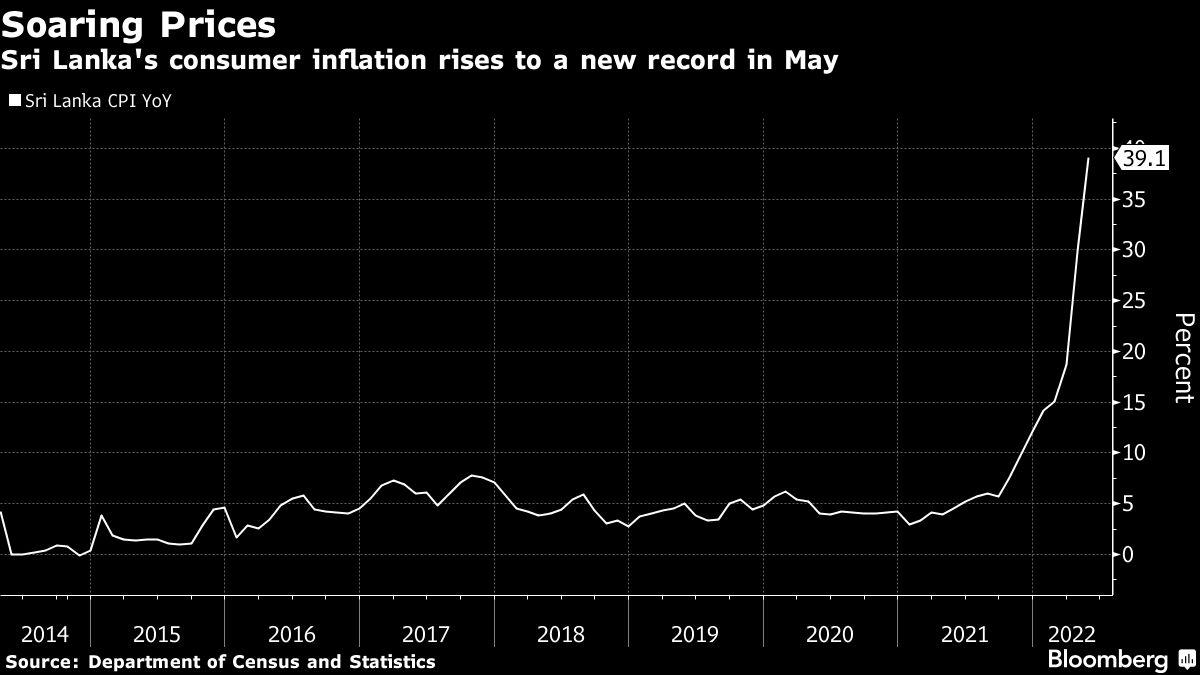
(Bloomberg) — Sri Lanka’s headline inflation quickened more than expected in May amid continuing food and fuel shortages, even as the country struggles to lift itself out of its worst economic crisis.
Most Read from Bloomberg
Consumer prices in the capital Colombo rose 39.1% from a year ago, the Department of Census and Statistics said in a statement Tuesday. That’s faster than the median 35% climb forecast by economists in a Bloomberg survey and is the highest level on record.
Food inflation surged 57.4%, while prices of non-food items jumped 30.6%, the data showed.
The Central Bank of Sri Lanka, which this month left borrowing costs steady while letting previous increases to filter through the economy, had predicted price gains to touch 40% amid a shortage of essentials in the absence of dollars to pay for imports.
A sharp fall in the Sri Lankan rupee and heightened global uncertainty also stoked prices. After having lost more than 40% following a devaluation in March, the currency has slowed its decline against the dollar since mid-May.
The country, battling its worst economic crisis since independence, needs $4 billion in emergency funds this year but a deal with the International Monetary Fund for rapid aid remains elusive. Securing an aid from the IMF would require structural reforms such as raising taxes and pruning expenditure, steps that could further aggravate pain for its citizens.
(Updates with details of food and non-food inflation in the third paragraph.)
Most Read from Bloomberg Businessweek
©2022 Bloomberg L.P.




